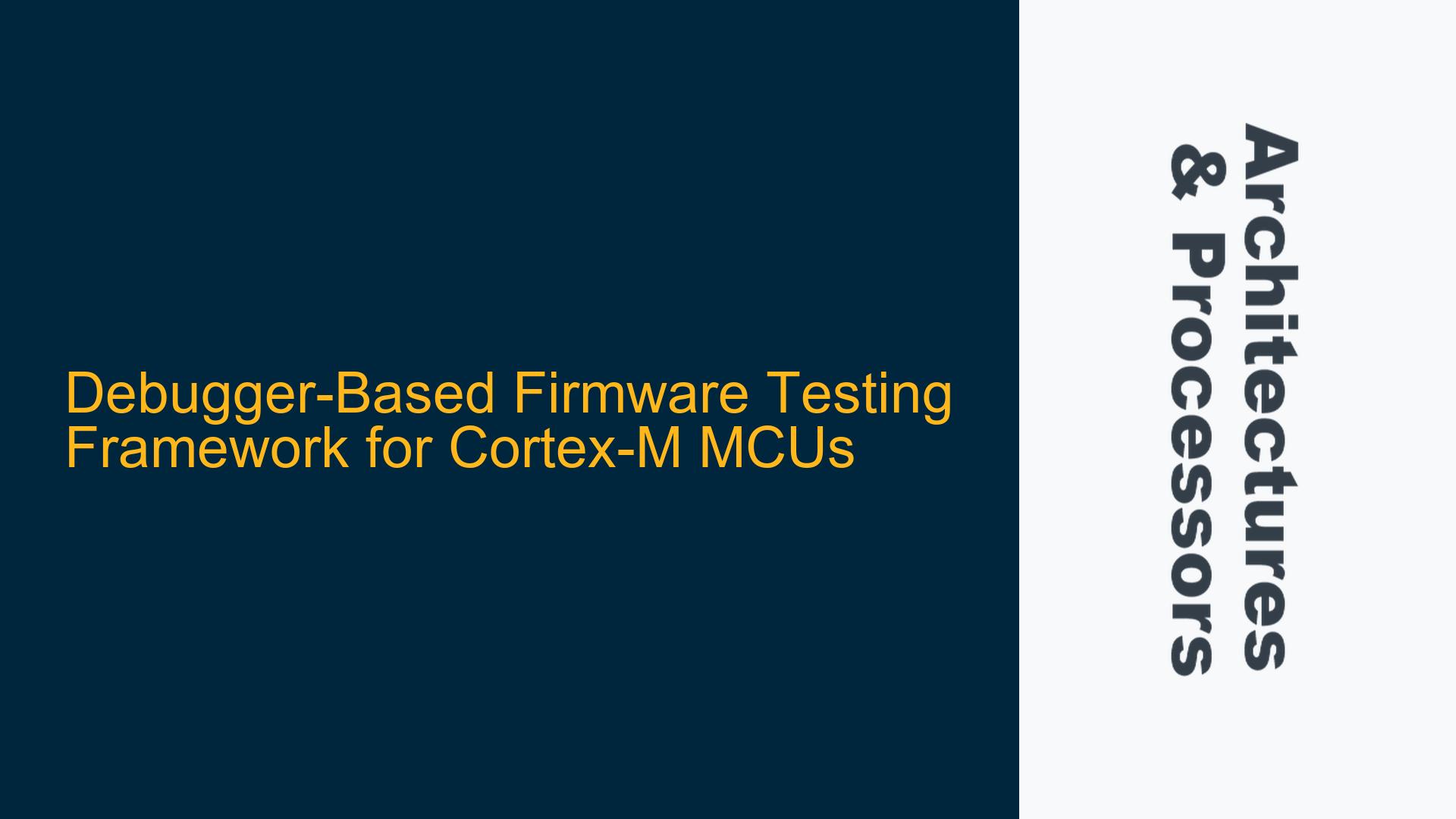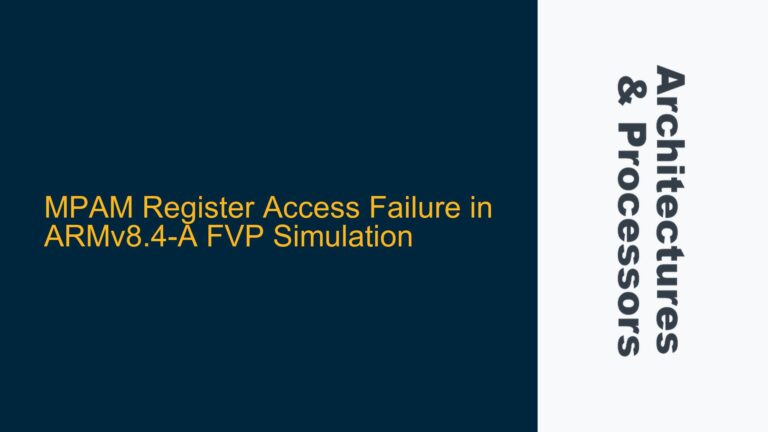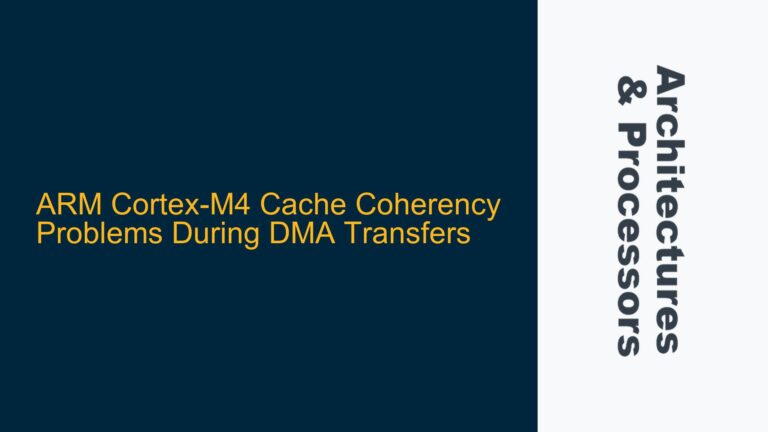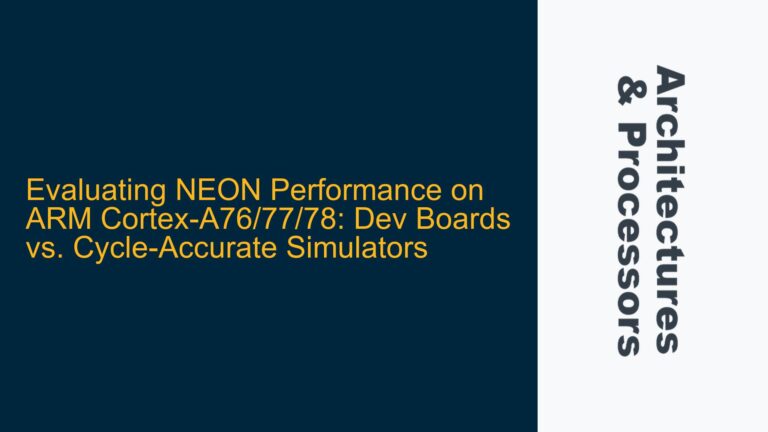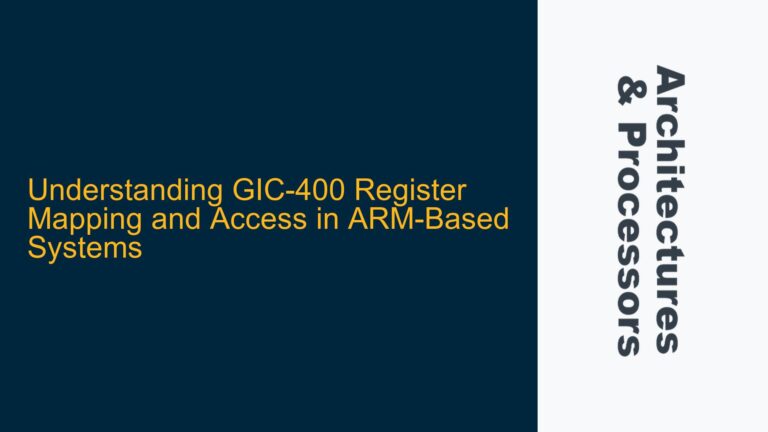Debugger-Based Firmware Testing Framework for Cortex-M MCUs
The development of a Python-based framework for on-target firmware testing of Cortex-M microcontroller units (MCUs) presents a unique opportunity to streamline the testing process while maintaining the integrity of the firmware. This framework leverages the debug probe to perform unit and system tests without requiring modifications to the firmware itself. The approach allows for firmware component testing without mocking peripherals, selective data injection during execution, and testing on the original target device using the original compiler. However, implementing such a framework requires a deep understanding of the ARM Cortex-M architecture, debug probe capabilities, and the interaction between the host PC and the target device.
The framework’s primary advantage lies in its ability to test firmware in its native environment, eliminating the need for test code compilation into the firmware. This ensures that the firmware behaves as it would in a real-world deployment, providing more accurate test results. However, this approach also introduces challenges related to debugger integration, memory access, and data synchronization between the host PC and the target device. Addressing these challenges requires a systematic approach to identify potential issues, understand their root causes, and implement effective solutions.
Debug Probe Integration and Memory Access Challenges
One of the core challenges in implementing a debugger-based firmware testing framework is ensuring seamless integration between the debug probe and the target Cortex-M MCU. The debug probe serves as the bridge between the host PC and the target device, enabling the host to control the execution of the firmware, inject data, and retrieve test results. However, this integration is not without its complexities.
The debug probe must be capable of accessing the target device’s memory and registers without disrupting the firmware’s execution. This requires precise timing and synchronization to ensure that the debugger’s operations do not interfere with the firmware’s real-time behavior. Additionally, the debug probe must support the specific features of the Cortex-M architecture, such as the Debug Access Port (DAP) and the Serial Wire Debug (SWD) interface. These features enable the debugger to access the target device’s memory and registers, but they also introduce potential points of failure.
Another challenge is managing memory access during testing. The framework must be able to read and write to the target device’s memory without causing memory corruption or data races. This is particularly important when injecting data into the firmware’s execution, as incorrect memory access can lead to unpredictable behavior. The framework must also handle memory-mapped peripherals, which require special consideration to ensure that peripheral registers are accessed correctly.
To address these challenges, the framework must implement robust error handling and recovery mechanisms. This includes detecting and handling debug probe disconnections, memory access errors, and synchronization issues. Additionally, the framework should provide detailed logging and debugging information to help identify and resolve issues quickly.
Data Synchronization and Real-Time Execution Constraints
Data synchronization between the host PC and the target device is another critical aspect of the debugger-based firmware testing framework. The framework must ensure that data injected into the firmware’s execution is correctly synchronized with the firmware’s real-time behavior. This requires precise timing and coordination between the host PC and the target device.
One of the primary challenges in data synchronization is ensuring that the injected data is available to the firmware at the correct time. This is particularly important in real-time systems, where timing is critical to the firmware’s operation. The framework must be able to inject data into the firmware’s execution without causing delays or disruptions. This requires careful management of the debugger’s operations and the target device’s execution.
Another challenge is handling the interaction between the host PC and the target device during testing. The host PC must be able to control the execution of the firmware, inject data, and retrieve test results without interfering with the firmware’s real-time behavior. This requires a high degree of coordination between the host PC and the target device, as well as robust error handling and recovery mechanisms.
To address these challenges, the framework must implement precise timing and synchronization mechanisms. This includes using hardware timers and interrupts to coordinate the injection of data and the retrieval of test results. Additionally, the framework should provide detailed logging and debugging information to help identify and resolve synchronization issues.
Implementing Robust Error Handling and Recovery Mechanisms
Implementing robust error handling and recovery mechanisms is essential for ensuring the reliability and stability of the debugger-based firmware testing framework. The framework must be able to detect and handle errors that occur during testing, such as debug probe disconnections, memory access errors, and synchronization issues. This requires a systematic approach to error detection, handling, and recovery.
One of the key challenges in error handling is detecting errors quickly and accurately. The framework must be able to detect errors as soon as they occur and take appropriate action to prevent further issues. This requires implementing error detection mechanisms at multiple levels, including the debug probe, memory access, and data synchronization.
Another challenge is handling errors gracefully and recovering from them without disrupting the firmware’s execution. The framework must be able to recover from errors and continue testing without requiring manual intervention. This requires implementing robust recovery mechanisms, such as retrying failed operations, resetting the target device, and restoring the firmware’s state.
To address these challenges, the framework must implement comprehensive error handling and recovery mechanisms. This includes using hardware and software-based error detection mechanisms, implementing retry and recovery logic, and providing detailed logging and debugging information. Additionally, the framework should provide tools for analyzing and resolving errors, such as error logs, debugging information, and diagnostic tools.
Conclusion
The development of a debugger-based firmware testing framework for Cortex-M MCUs presents a unique set of challenges related to debug probe integration, memory access, data synchronization, and error handling. Addressing these challenges requires a deep understanding of the ARM Cortex-M architecture, debug probe capabilities, and the interaction between the host PC and the target device. By implementing robust error handling and recovery mechanisms, precise timing and synchronization, and comprehensive logging and debugging information, the framework can provide a reliable and efficient solution for on-target firmware testing.
The framework’s ability to test firmware in its native environment, without requiring modifications to the firmware itself, provides a significant advantage over traditional testing methods. However, this approach also introduces complexities that must be carefully managed to ensure the framework’s reliability and stability. By addressing these challenges systematically and implementing effective solutions, the framework can provide a powerful tool for firmware testing, enabling developers to identify and resolve issues quickly and efficiently.
